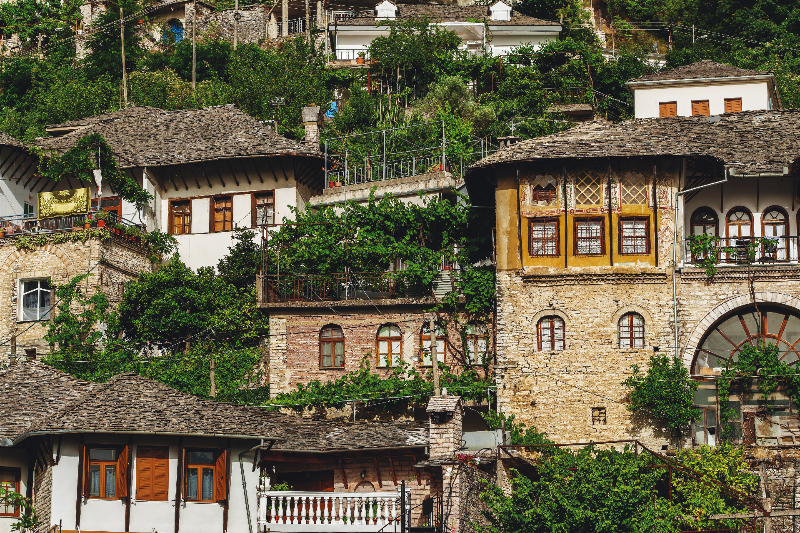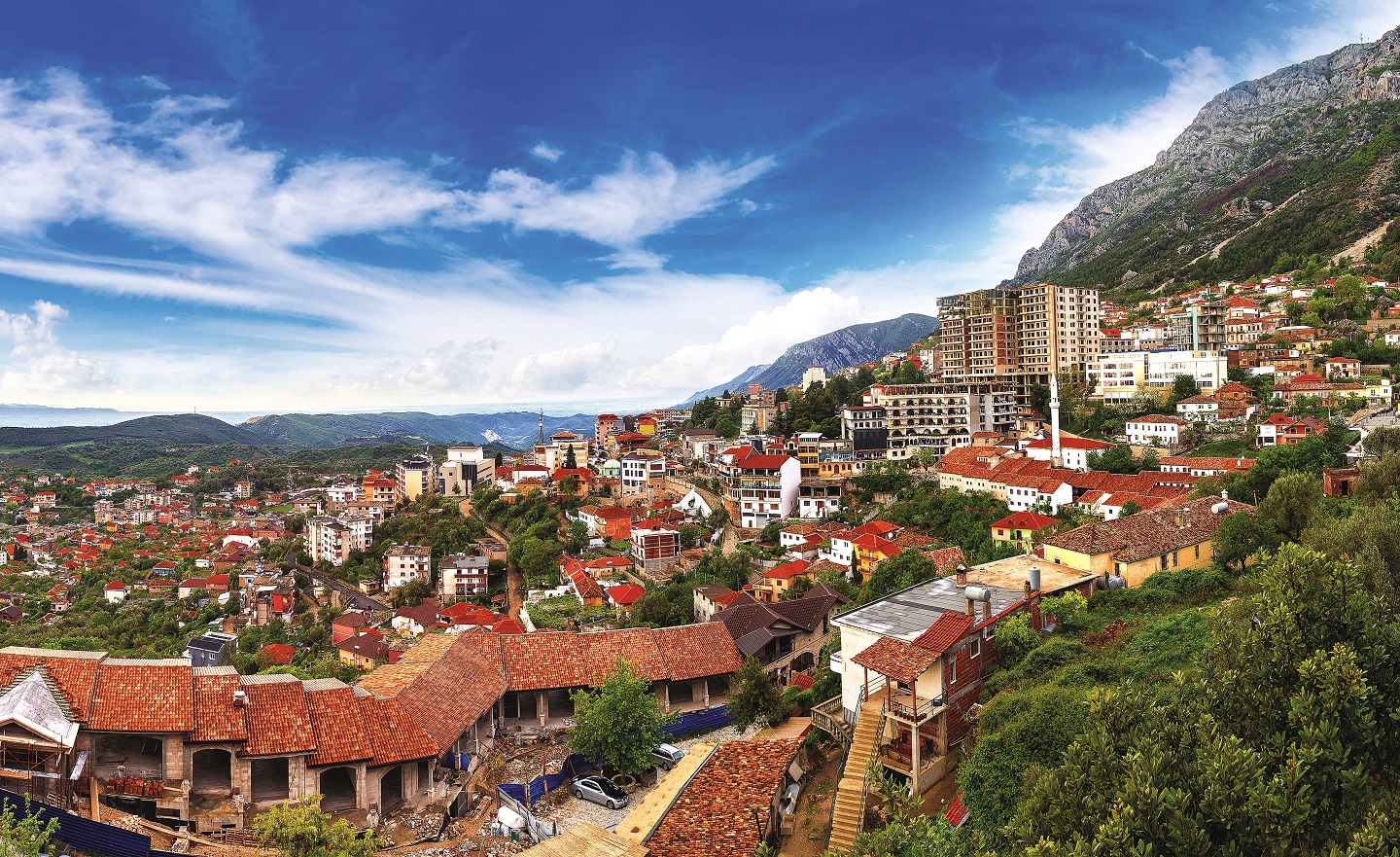
Stunning vistas await in Kruja
"Malaysian?” Our young host turned the red passport around and looked at it closely, front and back. “We have never had a Malaysian tourist staying with us before!”
This would be a recurrent refrain in Albania; a mixture of awed welcome, as if Malaysians were a rare species. The first time we heard it, we had just landed in Tirana, picked up a rental car outside the modest airport named after Mother Teresa (Nënë Tereza) and driven through wild traffic to reach our small B&B, run by a Muslim family. Albania was our serendipitous find. Shqipëri or Shqipëria is what the Albanians call the Republic of Albania, a country in Southeastern Europe so long under Hoxha’s closed communist regime that it was a land that time forgot. That is, until the revolutions of 1991 led to the fall of communism and the opening of the country, one still largely undetectable on most tourist radars.
Which was a blessing for us, because Albania is, without a doubt, one of the most stunningly beautiful and hospitable countries of our world.
We flew to Tirana from Barcelona, and all our costs were reduced to a fourth of Spanish prices, sometimes much lower. We expected minarets and the azan in street corners, for this is a Muslim-majority nation (about 58% of Albania’s population follow Islam, making it the largest religion in the country), but decades of state atheism, which ended in 1991, meant religious practices tend to be minimal.
74730848_l.jpg
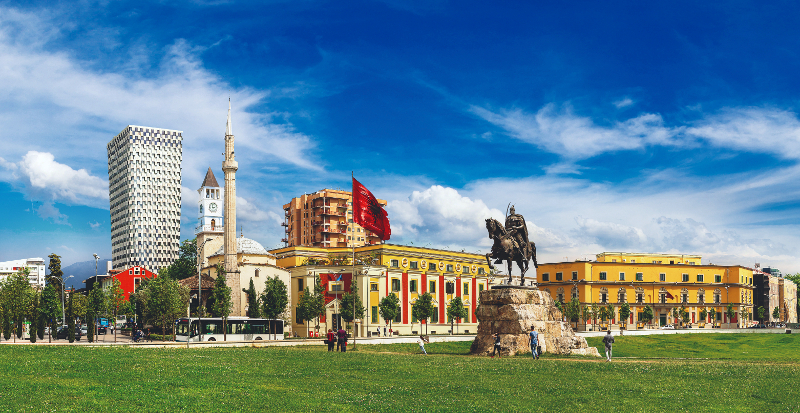
In this country on the Adriatic and Ionian Seas within the Mediterranean, sharing borders with Montenegro to the northwest, Kosovo to the northeast, North Macedonia to the east and Greece to the south, there is a sense of both old and new Europe contained within Albanian shores. There are miles of European cafés dotting gorgeous shorelines, people sipping coffee at leisure, with the occasional “Halal” sign prominent on the footpath.
After years of being closed to the world — an Albanian tour guide described how a banana was as rare as a Coca-Cola bottle in his childhood — people of this country, no matter where you go, are intensely curious and welcoming of foreigners. Our first stop is the capital and largest city, and driving in Tirana can be harrowing, but not impossible, for those used to the certain lawlessness of Malaysian roads. Tirana has some interesting art installations within old communist bunkers — 3,000 sq m of space underground spread over several floors, this bunker was built for the elite and remained a secret for much of its existence — but the real draw of Albania is in the smaller towns.
Especially the ancient smaller towns, with castles perched on hilltops, where it is still affordable to book a room overnight in a castle with ottoman wall panelling and breathe the air that the aristocrats of the land once breathed. North of Tirana is Kruja, home of national hero Skanderbeg, a feudal lord who led a rebellion against the Ottoman Empire; there is an active market on the cobblestone streets which date to Ottoman times. Berat and Gjirokastra, both on the Unesco list of World Heritage sites, were unlike anything I had seen before. They forced me to stop and marvel at how things in antiquity are still clearly etched in stone and we, with our five-second reels and digital photos try to capture these ancient footprints unerased by time. Here, a permanence prevails — a slower time, certainly — and also a reminder of our own mortality.
It is easy to see why Berat is called the “Town of a Thousand Windows”: houses with big windows are piled on top of each other on a steep hillside ending in a castle. The view is especially striking from the bustling promenade filled with men playing chess in groups, or from across the river. The 13th-century castle, where we stayed overnight, is spectacular. It is situated within a whitewashed fortress that feels like a maze and is filled with an ancient neighbourhood of homes jostling with churches and open courtyards, where the fragrance of chamomile is underfoot, and wildflowers grow untrammelled in the spaces between the old cobblestones. Some churches in this area date back to the 13th century, and the Red Mosque dates to the 15th century.
Long before I set foot on Albanian soil, I had read about Gjirokastra, a town made famous by Ismail Kadare. In Chronicle in Stone (translated by Arshi Pipa), Kadare’s opening lines about Gjirokastra paint the stone walls in wondrously descriptive hues:
“It was a strange city, and seemed to have been cast up in the valley one winter’s night like some prehistoric creature that was now clawing its way up the mountain side. Everything in the city was old and made of stone, from the streets and fountains to the roofs of the sprawling age-old houses covered with grey slates like gigantic scales. It was hard to believe that, under this powerful carapace, the tender flesh of life survived and reproduced.”
148372749_l.jpg
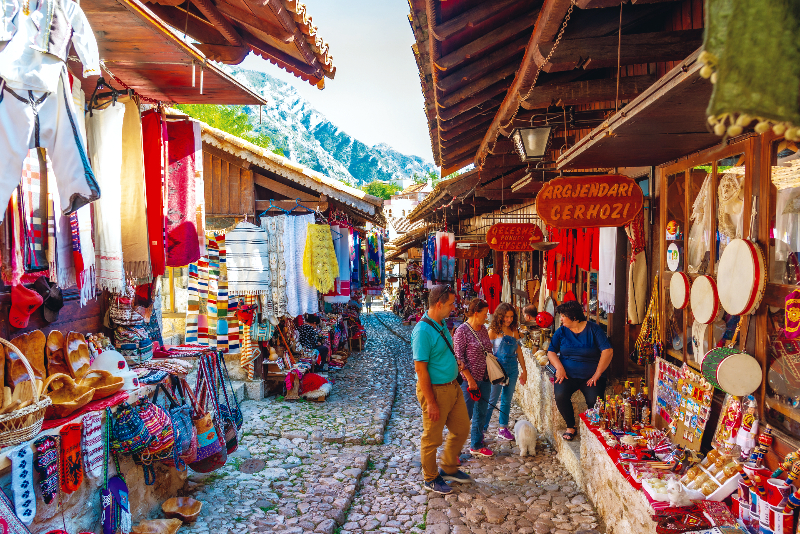
Over the centuries, Albania has been inhabited by different civilisations — Illyrians, Thracians, Greeks, Romans, Byzantines, Venetians and Ottomans— and the ruins of a stunning Illyrian city is a day trip from Tirana. This ancient windswept city, Apollonia, is still mostly buried underground, but what blooms excavated above ground feels like a portal to someplace else. Elegant pillars from the restored façade of the city’s 2nd-century walls tower over verdant green, among olive groves, picturesque from any angle. There is a museum complex that sheds light on the archaeological site, and inside the complex is the Byzantine monastery and Church of St Mary, which has gargoyles on the outside pillars and impressive Roman floor mosaics inside.
Butrint, in the Albanian Riviera, is another ancient site worth travelling a long way to see. We drove through soaring mountainous passes, stopping only to allow donkeys to cross, and sometimes to buy honey beyond the buzzing hives. We passed lakes that looked like eyes of blue. The ruins of Butrint are a part of a national park and cover a variety of periods spanning 2,500 years.
cafe_kanda_in_himare_2.jpg
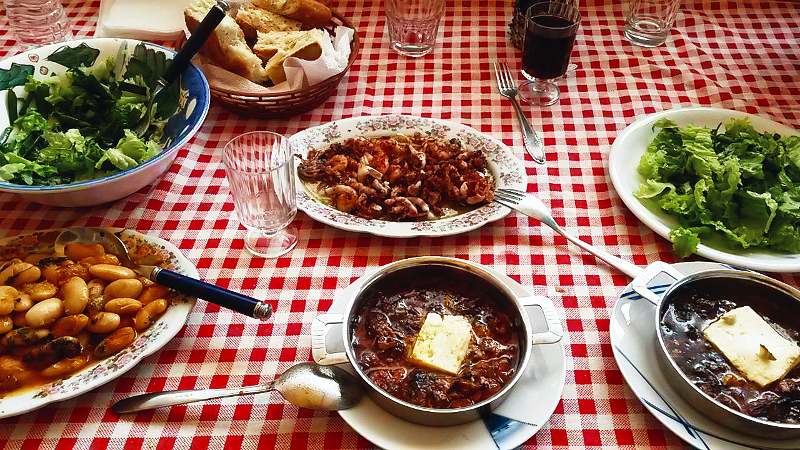
Food in Albania was always wonderful, served with locally grown vegetables and fresh olive oil. At Café Kanda in Himare, we stumbled into a small family eatery, where the father fished, the mother cooked and the son (the only one who spoke English) served with genuine delight, and it was one of the highlights of the journey. We had many extraordinary culinary experiences in Albania and loved it all: the slow-cooked stews thick with tomatoes and cottage cheese; lamb baked into rice with yoghurt and eggs, or served grilled in a light marinade; pastries stuffed with sweet or savoury fillings; and the seafood was never a disappointment.
The Albanian language is unique in Europe and has its own branch on the linguistic tree. English is widely spoken, but you will find that Albanian hospitality needs no translation. Learn this word before you go, for you will use it often and mean it from the bottom of your heart: faleminderit, or “thank you”.
This article first appeared on July 4, 2022 in The Edge Malaysia.

